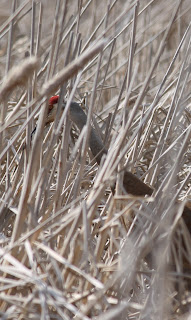So, what goes into a memorable bird picture?
Of course, clarity, good focus, an appropriate depth of field, just as in any photograph. I end up using auto focus, which allows me to shoot quickly. However, since I used the 'old-fashioned' viewfinder, that also means that sometimes the focal point ends up being the tip of the beak or a feather rather than the eyes. Hard to tell in that tiny window!
That's a key: The eyes need to be in focus. With just about any creature where the eyes can be seen, they usually need to be in focus.
And, if there's a highlight on the eye, so much the better.
Is the light modeling the shape of the body?
Is the bird doing something particularly birdlike? Or something unique to its species? Is the woodpecker pecking? The warbler warbling?
And finally, do you get a bit of personality?
In my second summer with this camera in the same, small two county area, I sometimes realize I have photographed a bird I shot last year--and it's not just markings, it's their neshama, their soul.
Other times, in the case of red-winged blackbirds for instance, I'm finally getting technically proficient pix on a regular basis. But there are the few that, if I shot the same bird again, I think I would recognize it. Because of their essence, their personality that shines through.
So, that's a lot of it--do they become as individual as a person or a pet? Could I pick them out of a crowd? That's capturing soul.








